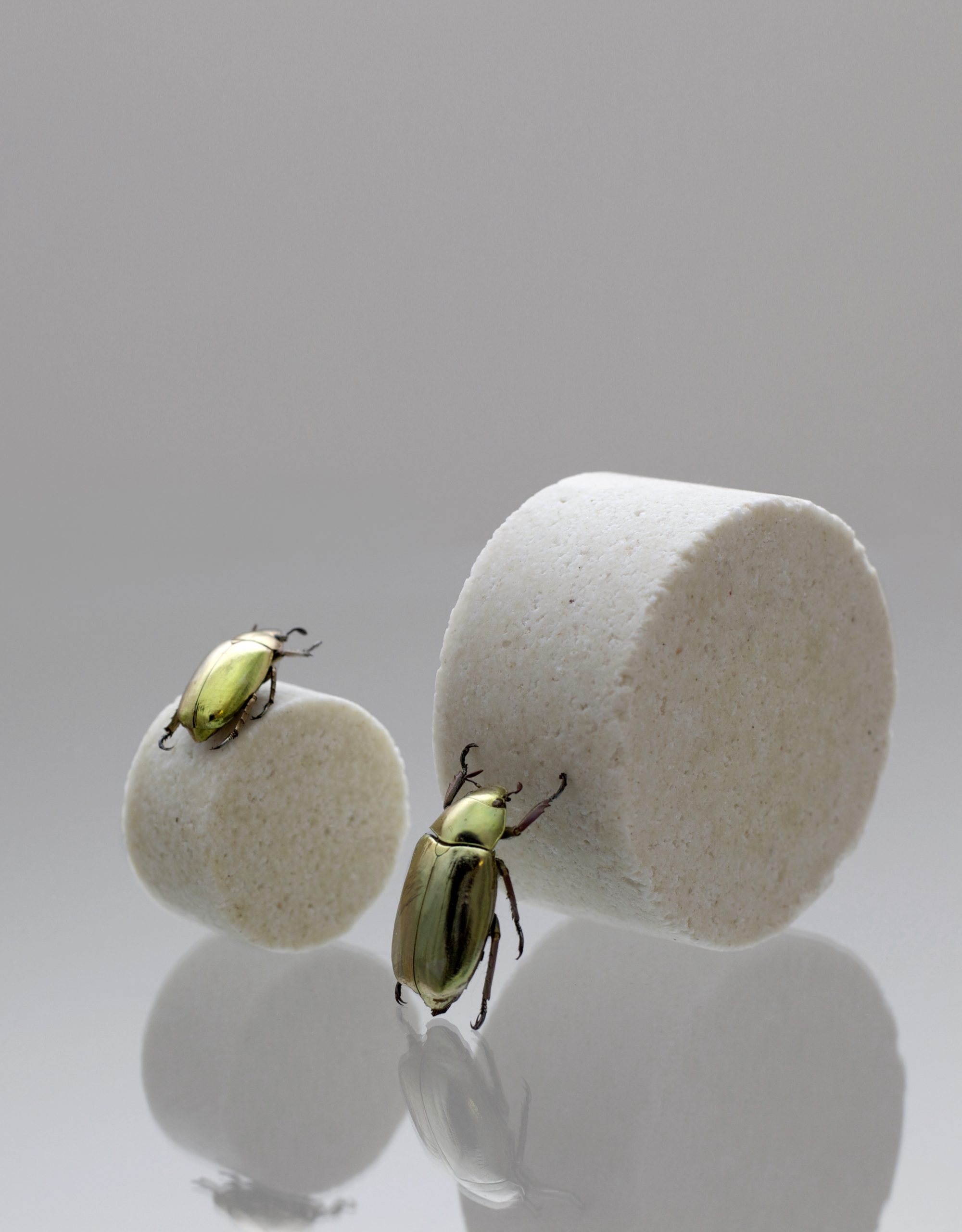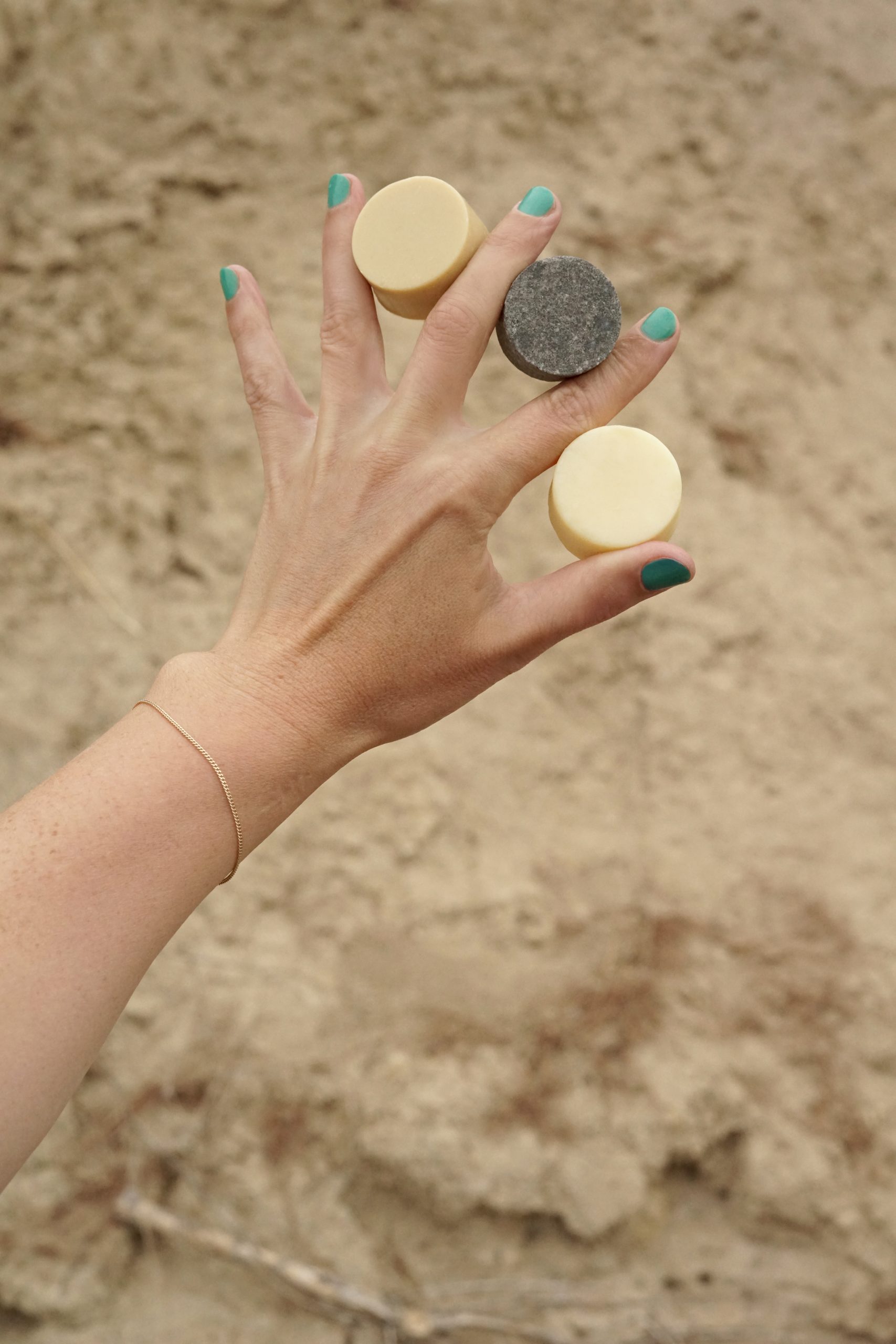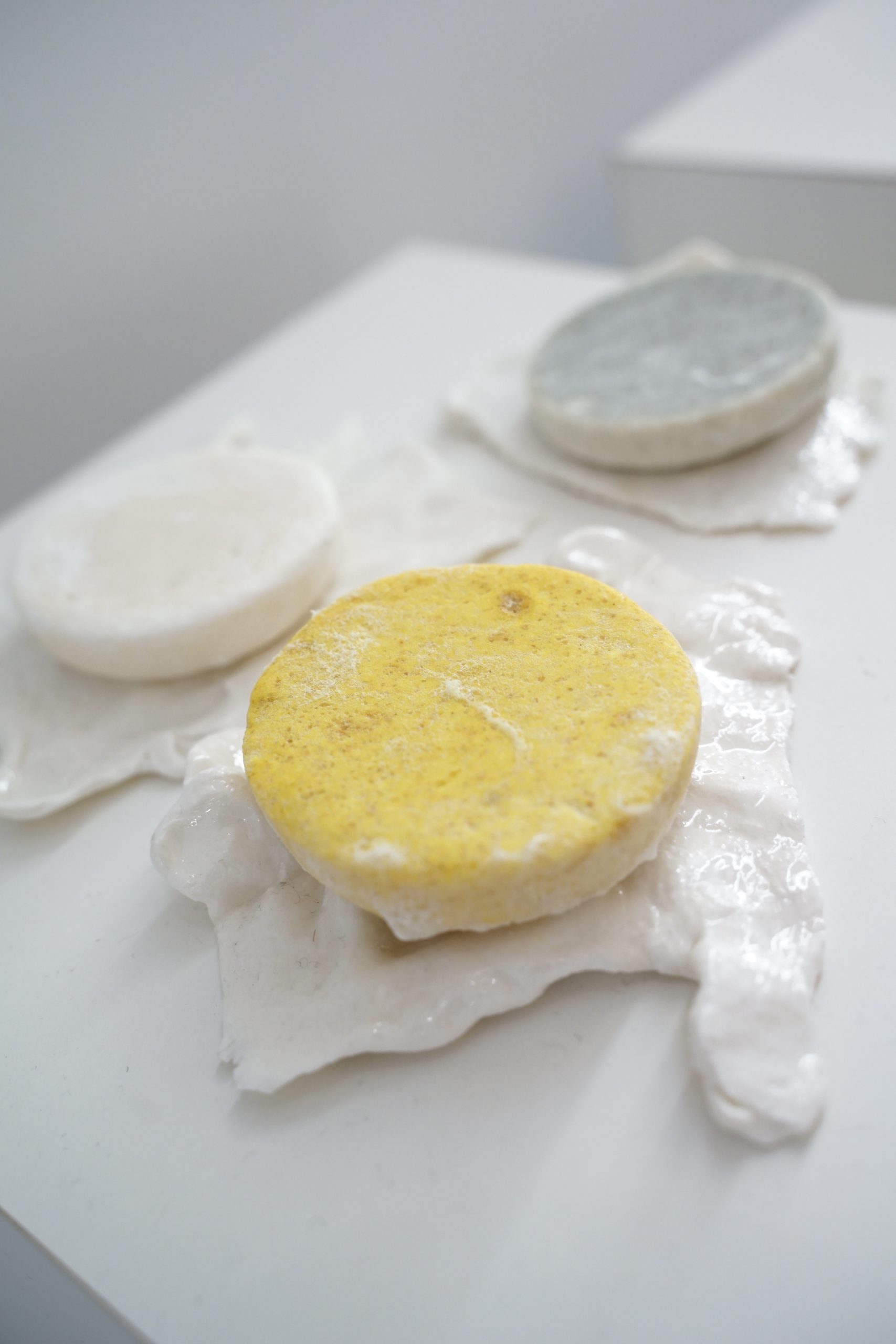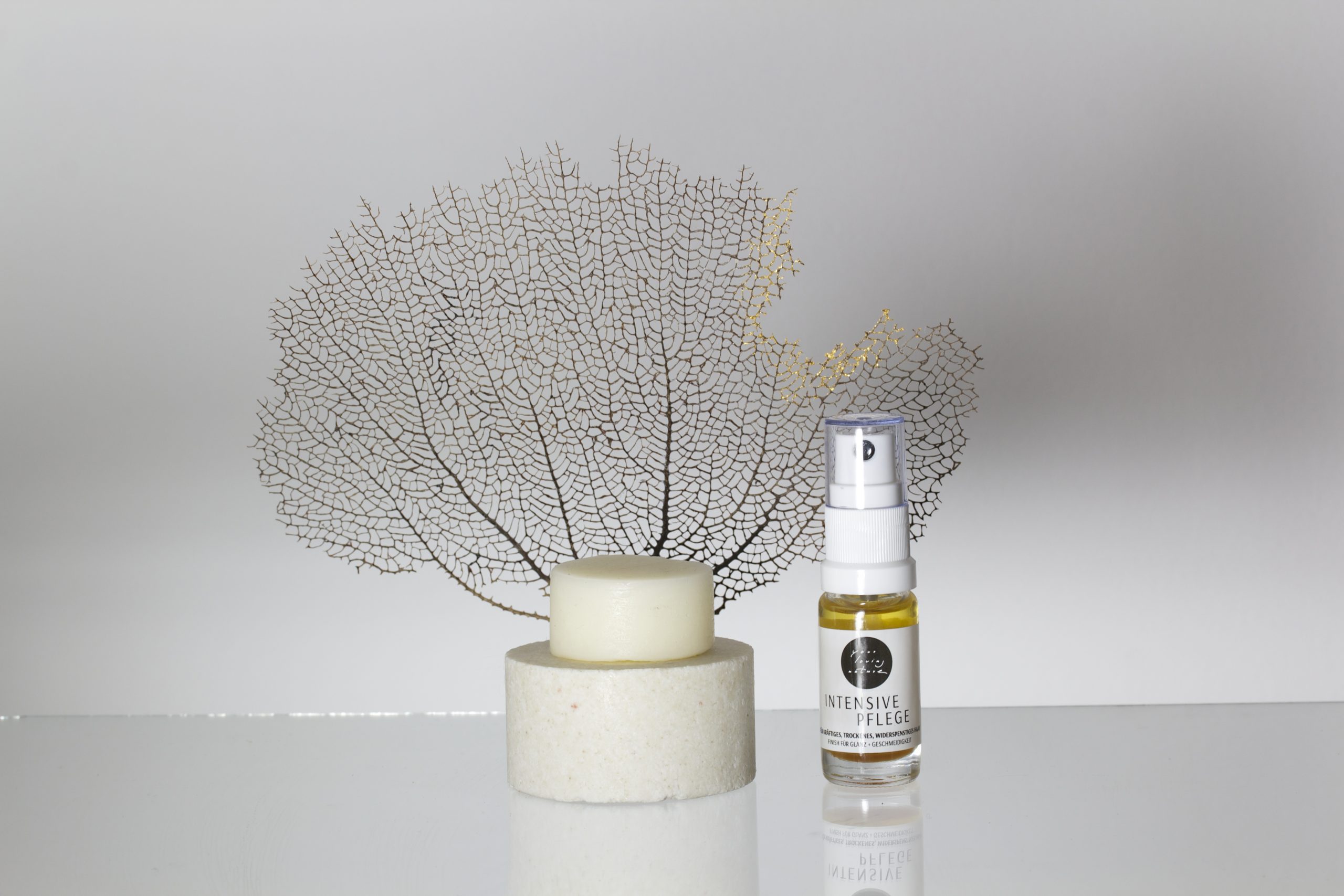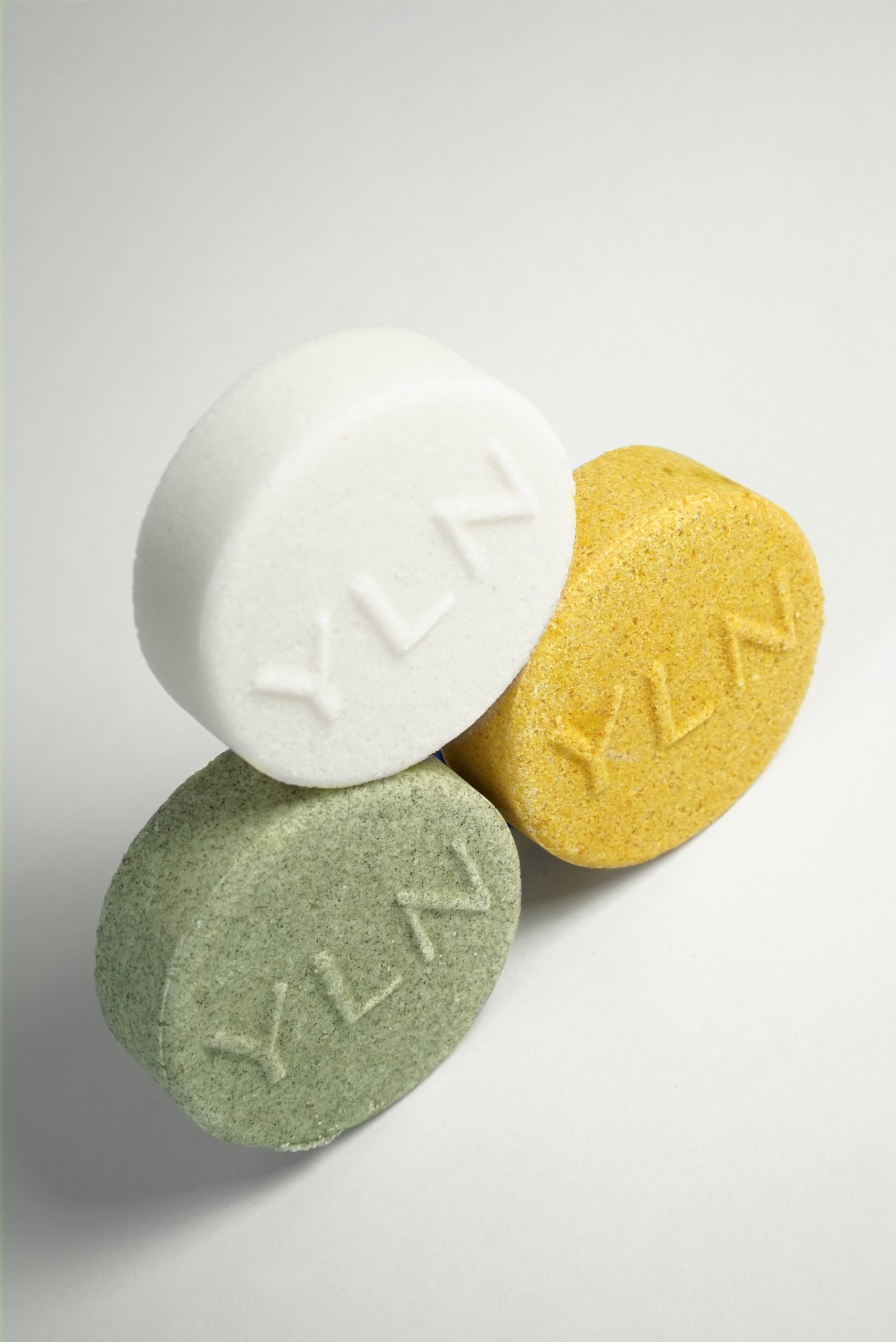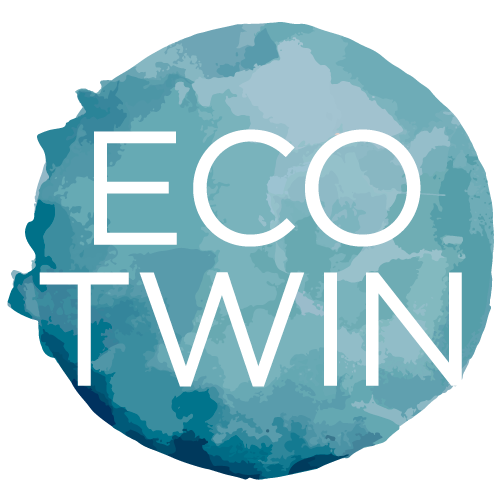
Your Loving Nature – natural cosmetics for hair care
Marion Garz has a cosmetics brand, is a hairdresser, make-up artist, artist, photographer and certainly much more. She loves curls and nature, climbing mountains and seemingly insurmountable hurdles in the cosmetics industry. With Your Loving Nature, she founded her own hair care label in 2012. Her main motives were frustration with the inadequacy of existing products and the market flooded with them, and the realisation of what good products should actually be like: bringing out the best in hair visually and haptically, promoting a natural and authentic style, and being based on high-quality ingredients that are as natural as possible – such as pure plant oils, plant butters, herbs, salts and mineral earths – without overburdening nature. We talked to Marion Garz about her path there, which of course was not an easy one, the innovative products of Your Loving Nature and their special features, about prejudices against solid shampoos, time-outs in nature and the insights you can take away from it.
After your hairdressing apprenticeship you went to the theater, then to art school and back to a salon, international hair & make up jobs included, until you finally founded your own label Your Loving Nature. Your career sounds interesting. How have aesthetics and craftsmanship, art and nature intertwined over the years?
It was a very organic process. For me, it starts with a truthfulness and an honesty in art. With my own art projects or artworks, I asked myself in advance: What makes sense? To what limit do you go? And also: What can you take away in order to condense things, to concentrate. It’s always about taking something away. In a society, too, one can ask oneself what can be taken away and what is actually important? I find a lot of existing things completely exaggerated and superfluous in the meantime, in all areas. What does one really need? Everyone wants to be happy and to be in a loving relationship.
In your salon you indulge people, or rather their hair, the ambience is beautiful, people do something good for themselves, treat a little “luxury” – that’s also part of it, isn’t it?
The treatment in the salon is not only an external application, but also a mental address: Our appearance, and this includes our hair, has a lot to do with our mood and vice versa, our appearance has an influence on our mood. In my profession, you deal with people’s wishes, but also with what they dislike about themselves. And hair often symbolically stands for characteristics – so you are often also therapeutically on the road, it has to do with self-esteem and expectations, with female customers also often with the image of women in general and emancipation.
The question is therefore also, where does the image that one wants to present come from? Are these one’s own expectations of oneself or those of others? And is it even possible to separate and assign them?
Exactly. And then you quickly get to nature. Where do I come from, where am I going, what is my essence.
As a make-up artist and hairdresser, you were always confronted with the transformation and vanity of people.
Make-up is an important tool for many people, even in everyday life. Some have this tick with the red lipstick, they can’t do without it. It’s a protection, just like clothes. If I go out in sweatpants instead of jeans, I’m a little more vulnerable. That’s psychologically interesting. Everyone builds their own individual protective shield. Our own and social expectations play a role here.
Do you see that as a contrast to nature?
When people no longer go out the door without makeup, then you can question that. Everything else is probably normality by now.
How has your individual connection to nature “grown”? If one looks around here at your place, much testifies to the intensive look into the burning glass. Here a prepared bee, there an enlarged insect wing…
We were not nature freaks in the past, but my parents had a large garden and I had an allotment garden near Berlin for a long time. Seeing for myself how humans directly impact nature was eye-opening. That was before climate change was so present in the media. The glyphosate debate (the world’s best-selling weed killer, a so-called total herbicide that kills every plant) was underway, which first affected agriculture. Then there was a food and finally nutrition debate, and trends like mindfulness and yoga emerged.
What did that do to you personally?
In my garden, it became much more real than in the city. I had retreated there a bit and automatically focused more on nature, also with my photography, which became more and more botanical. You suddenly become aware of the human impact on nature: on the one hand, you work for nature, which is supposed to grow, and on the other hand, you work against it when the snails eat away your little sprouts. So you quickly become part of the whole and have to take sides. You can’t just sow seeds and then hope that the seeds will succeed on their own. You have to protect them and water them.
Don’t we also have to go back to understanding and using nature not just as a resource, but to recognizing that we ourselves are a part of nature?
Totally. We always believe that we have to take care of nature. Or we exploit it shamelessly. Instead, we should get into a good, realistic cooperative relationship with it, strive for a give-and-take.
The good thing is that nature does not need us and will probably outlast us. Before we have destroyed nature, our living conditions have long been exhausted. Plainly spoken: We eat up all the eatable animals and poison all our crops and there will still be many species surviving, but of no use to us – and that’s it for us. That’s soothing, in that context, isn’t it?
It is. But our own impact on biodiversity is undeniable, and you can already see it on a small scale. Before I understood why it was always just me digging around in the garden and everyone else sitting in a deck chair – they just sprayed these plant killers and that was it. And then suddenly you’re right in the middle of the topic, dealing with crop rotation, planned agriculture and permaculture. But you also notice completely different, banal things in such places, for example how much garbage you constantly produce, because you can only dispose of garbage there in a very limited way. In parallel, in my salon, where I went to work in the city three times a week, I was increasingly bothered by all these shampoo bottles and canisters. Suddenly you register in all places what has gone out of balance: all the yogurt pots in the supermarket, the mountains of garbage on vacation, the unnecessary consumption of water and electricity.
Not everyone seems to notice that. I rather have the feeling that many lead a double life: In the weekend house in the country, they plant and compost with dedication, in order to drive back to the city on Sunday evening in insanely fuel-intensive cars.
There is a lot of pretense in general, from lobbyists to private end users, people like to fool themselves with green washing. People like to buy new things and are happy when it says “sustainable” on it and maybe even boasts about it. But doing without would be more advisable here and there. And sanctions and bans from the government level. The responsibility for lower or more sustainable consumption must not be borne by the individual alone; that doesn’t work. There is already too much of everything being produced.
Thus, packaging and waste were your nudge to rethink and change. Or were you also unhappy with the products in your salon?
Both. At that time, the first supermarkets with unpackaged food appeared and I thought about how I could transfer something like that into my cosmos. Also, I have an outdoor shower in my backyard and could literally watch my shampoo seep into the ground and what that does to the lawn. At the latest, it makes you wonder what all is in these products. From preservatives, alcohols, fragrances to toxic filters and petroleum derivatives.
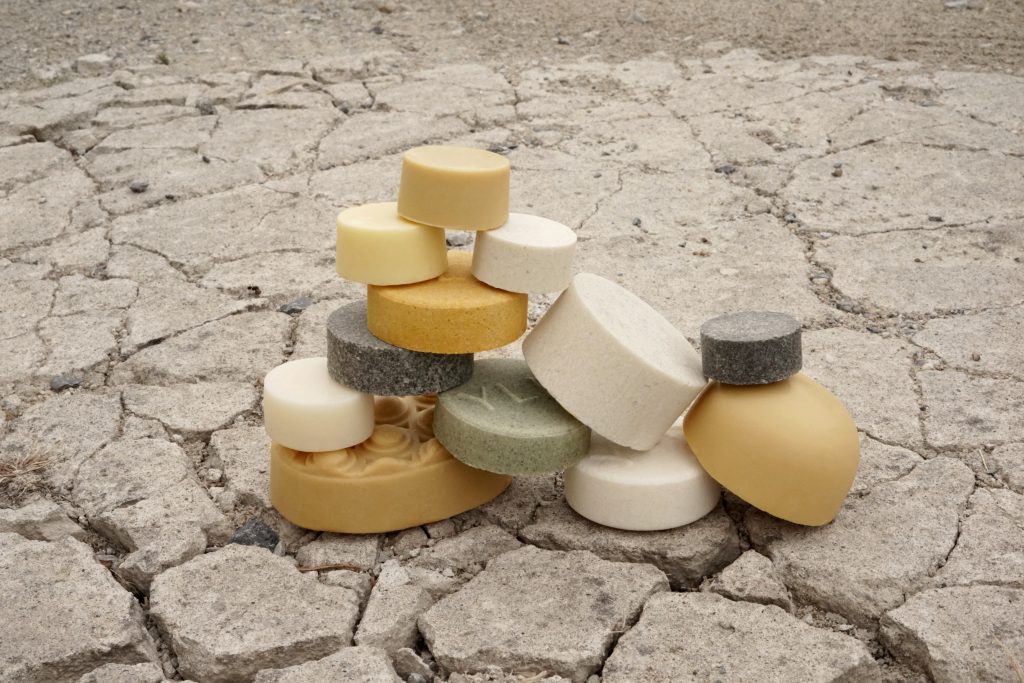
Your time in your garden, then, led you to question the products in your salon, both externally and in terms of content.
I wanted to change professionally anyway, to make my work more ecological. The business relationship with my business partner at the time dissolved and the first solid shampoos came on the market, or at least were already a topic in the industry. At first, I didn’t know where to start because I’ve never been a soap fan.
Talking of which, what exactly is the difference between soap and solid shampoo? After all, no one wants that typical soap feeling, squeaky clean and dry as dust, on their head!
Soaps are vegetable oils saponified with sodium hydroxide solution. They usually have a skin-unfriendly pH value and leave exactly this feeling on the skin or scalp that you describe. I first did a soap workshop and tried all the organic shampoos that were on the market, including the first solid shampoos. However, I was not satisfied with any of them. Organic cosmetics are also not automatically good products. An organic seal only says what a product does not contain, for example, petroleum derivatives such as silicones, synthetic preservatives, parabens, etc. Extracting petroleum is already a heavy burden on the environment. The raw material is then chemically treated in such a way that it causes even greater damage because it is no longer biodegradable. Surfactants, on the other hand, are washing-active substances of natural origin that are needed in every shampoo. Depending on the hair structure and scalp more or less. In the end, I then developed, tested and refined various products together with different manufactures.
How do you get to such manufacturers?
Go to trade fairs and ask around. There are large and small ones. You must see who fits your idealism and how and where they get their raw materials from. I didn’t have any investors, I’m not a big brand and I never wanted to put my products on a large scale. I just wanted to work with other types of products and just went for it. The manufacturers, on the other hand, also have to be willing to develop something with you, which is then exclusively your product. Then it goes back and forth for a while until the product has the desired characteristics and the hair feels and looks the way you want it to.
What’s the difference between your approach and those of the discount drugstores?
They start at a completely different level. At the beginning, there’s the price. And the shelf life (the products have to be very storable). Discounters have a specific target audience, they know what they’ll spend on a shampoo and what they expect, and work around that. I did it the other way around, that’s probably what’s extraordinary about my products. At first I didn’t care what the raw materials cost, I just wanted to have the best possible product. And then I wanted to see where I would end up in terms of price and whether it could be sold. Of course, that only works because there are no middlemen involved at the moment and I only offer my products myself. As soon as you make the production larger, it becomes immeasurably more expensive and you may have to cut back on production and quality. I would have to get out of my small manufactories and go to factories that can’t even agree to my conditions. Just for hygienic reasons, they have to conserve much more.
The consumption is of course individual but with your shampoos you generally get along for a very long time, months – do they also last that long?
That varies from product to product. The solid shampoos last very long, in the cream bars are butter and vegetable fats, which must be partially cooled and do not last forever. The products must also not be in the water. So I also always still explain something about the handling and special features. A drugstore chain could not do that at all. So my products in the current form are not necessarily suitable for the large trade.
You have to deal a little more intensively with the products and pay a little more – although I’m not at all sure, you would have to compare how long you can get by with your and a conventional shampoo – and you should not hoard, but only stock up according to your current needs. One can accept that, can’t one?
For his body and skin, I think the compromise is reasonable. I have to pay attention to a few things, but in return I can do without harmful ingredients such as preservatives, alcohols and co. and instead have a select range of natural, high-quality and effective ingredients. Even the good ingredients in Massmarket products, vegetable oils for example, are deodorized and made inferior by the refineries, just not many people know that.
How to store your products properly, you show here quite clearly, there are, for example, jars and beautiful ceramic plates from Tanja Neubert. But how to use your products properly? I’ve tried other solid shampoos before and had trouble getting enough product on my hand to get it into my hair afterwards – and was rather dissatisfied with the handling.
Many people do this wrong. It’s very easy if you rub the shampoo bar over your head.
I see. That sounds easy. After all, it would be nice if more people would get involved in something new to live a little more ecologically and “get off” the conventional shampoo bottle.
True! But I don’t want to be seen as an eco-pioneer – among hairdressers maybe, but I was primarily interested in finding a solution for problem hair, which I am confronted with every day here in the salon: rebuilding dry hair, caring for damaged or grey hair.
Do your products work for all hair types, including colored hair?
Yes, they work for all hair. From an ecological point of view, of course, hair color is bad because the chemicals end up in the groundwater. As with everything, it depends on how often you color your hair, twice a year or every four weeks.
At some point, the hair can no longer stand it, right? I have the impression that when you’re young, you can cope with a lot and suddenly it doesn’t work anymore. Just like your figure and health, your hair sends a clear warning signal at some point with its limp or poor appearance.
That’s how it is. When you are young, the cheap shampoos don’t harm you either, but they do to the environment, of course. Then there’s a wide range of mid-priced products that make your hair feel really good, too, thanks to the silicones and whatever emollients are in there. I also didn’t realize before that these silicones are actually liquid plastic. And that a soft feeling has nothing to do with healthy hair.
Isn’t it the case with these shampoos that they are a bit addictive? It seems to me as if I have to constantly wash my hair with it….
Softeners weigh down the hair and silicones do not go down from the hair even when washing. This makes most hair look so smooth and heavy but also greasy quickly.
But that can not be what everyone wants and go along forever?
Honestly, I’m also surprised that not even more hairdressers are looking for alternative products. But this search also makes a lot of work. Not only the product development, but also the completely different way of contacting customers. I get emails every day with questions about how to get this or that hair back under control. But you can also see from this that consumers definitely have a need for good products. Of course, everyone decides for themselves when a product is good. Various criteria can be applied: How and where something is produced, what is in it, and above all: how the hair feels and behaves.
What helps with problem hair and how should good hair feel?
That’s something you have to try out. Silicones and emollients, as I said, make the hair feel good, but also seal it so tightly that it virtually dies of thirst underneath. After that, you first have to supply it again with moisture binders, fats and oils. And here the individual hair types need different compositions.
So, when I say goodbye to my mass-market shampoo, do I first have to go through a valley of tears until my hair is rebuilt?
No, this happens very quickly.
There are now also people who don’t wash their hair at all, have you heard of the “No Poo Movement” and what do you think of it? So do we need shampoo at all?
I think it’s unrealistic in most cases. Teenagers or people with natural and completely unproblematic hair can do it. And even there I don’t think it’s very hygienic, dust and dirt inevitably ends up in the hair. Most hair also has needs, they are dry, oily, damaged, fine or strong and frizzy and need different care. Fine hair usually only need moisture, strong and frizzy need oils and moisture. Basically, there are dry and non-dry, fine and strong hair. Smaller divisions are also a marketing tool to sell people especially many different products.
What hair care products do you actually need?
At the time, the brand we worked with in our salon had a phone book-thick catalog of products. And I’ve always thought, that can’t be, that you need and use all that. That’s the way it is with cosmetics in general. As a make-up artist, I’ve had the same experience. It’s all about refining the face a bit, giving it more contour.
How many products do you offer?
In principle, there are two products: a shampoo that is more degreasing and a sensitive one. The sensitive shampoos have three different fragrances. The three “intense” shampoos, on the other hand, differ in effect, one gives more volume, one more suppleness. There are two product families, one with a stronger surfactant blend for greasier hair and one with a milder surfactant blend for dry hair or people who like to wash their hair every day. The mild shampoo can also be taken for the body or for shaving. In addition to the shampoo and conditioning bars, I have also developed a few products for the body, as well as a few care and styling products.
The bars also look beautiful, in a color scheme from wool white to honey yellow, sage green and granite, and with different grains.
This makes alone the ingredients, such as mango butter or blue-green algae.
Are you happy with your product range or is something still missing? What’s next for Your Loving Nature?
Actually, the thing is now complete, the product range is ready and I am very happy with it. Since I’m taking care of everything on my own at the moment and don’t do any advertising, my business is growing quite organically, just through recommendations and a bit of press from interested editors and platforms, and I’m still coming along nicely. The only thing that still appeals to me is a real salon concept, i.e. a “wash and go” concept to demonstrate the products and their application. I want to show my customers in a very honest way that my products are great – it’ s that simple. That is much more convincing than any advertising!
Thank you dear Marion for this very interesting and nice interview.


